I think I've found three potential solutions/approaches.
First the data:
pop <- read.table(header=TRUE,
text="
x y prop
106.3077 38.90931 0.070022855
106.8077 38.90931 0.012173106
106.3077 38.40931 0.039693085
105.8077 37.90931 0.034190747
106.3077 37.90931 0.057981214
106.8077 37.90931 0.089484103
107.3077 37.90931 0.026018622
104.8077 37.40931 0.008762790
105.3077 37.40931 0.030027889
105.8077 37.40931 0.038175671
106.3077 37.40931 0.017137084
106.8077 37.40931 0.038560394
105.3077 36.90931 0.021653256
105.8077 36.90931 0.107731536
106.3077 36.90931 0.036780336
105.8077 36.40931 0.269878770
106.3077 36.40931 0.004316260
105.8077 35.90931 0.003061392
106.3077 35.90931 0.050781007
106.8077 35.90931 0.034190670
106.3077 35.40931 0.009379213")
The first approach is similar to the one I mentioned in the comments above, except using symbol colour instead of symbol size to indicate population size:
# I might be overcomplicating things a bit with this colour function
cfun <- function(x, bias=2) {
x <- (x-min(x))/(max(x)-min(x))
xcol <- colorRamp(c("lightyellow", "orange", "red"), bias=bias)(x)
rgb(xcol, maxColorValue=255)
}
# It is possible to also add a colour key, but I didn't bother
plot(pop$x, pop$y, col=cfun(pop$prop), cex=4, pch=20,
xlab="Lon.", ylab="Lat.", main="Population Distribution")

The second approach relies on converting the lon-lat-value format into a regular raster which can then be represented as a heat map:
library(raster)
e <- extent(pop[,1:2])
# this simple method of finding the correct number of rows and
# columns by counting the number of unique coordinate values in each
# dimension works in this case because there are no 'islands'
# (or if you wish, just one big 'island'), and the points are already
# regularly spaced.
nun <- function(x) { length(unique(x))}
r <- raster(e, ncol=nun(pop$x), nrow=nun(pop$y))
x <- rasterize(pop[, 1:2], r, pop[,3], fun=sum)
as.matrix(x)
cpal <- colorRampPalette(c("lightyellow", "orange", "red"), bias=2)
plot(x, col=cpal(200),
xlab="Lon.", ylab="Lat.", main="Population Distribution")

Lifted from here: How to make RASTER from irregular point data without interpolation
Also worth checking out: creating a surface from "pre-gridded" points.
(Uses reshape2 instead of raster)
The third approach relies on interpolation to draw filled contours:
library(akima)
# interpolation
pop.int <- interp(pop$x, pop$y, pop$prop)
filled.contour(pop.int$x, pop.int$y, pop.int$z,
color.palette=cpal,
xlab="Longitude", ylab="Latitude",
main="Population Distribution",
key.title = title(main="Proportion", cex.main=0.8))

Nabbed from here: Plotting contours on an irregular grid


